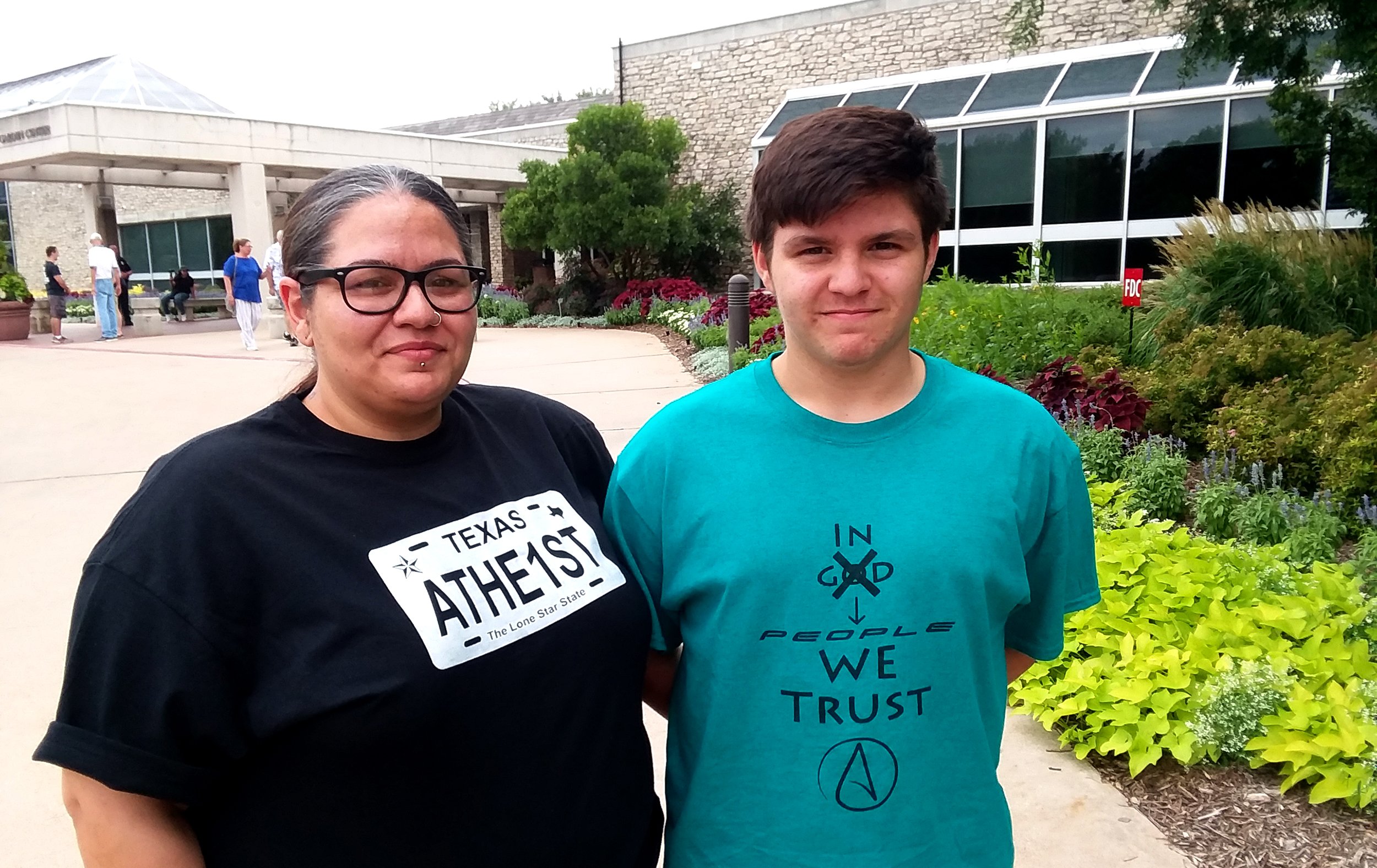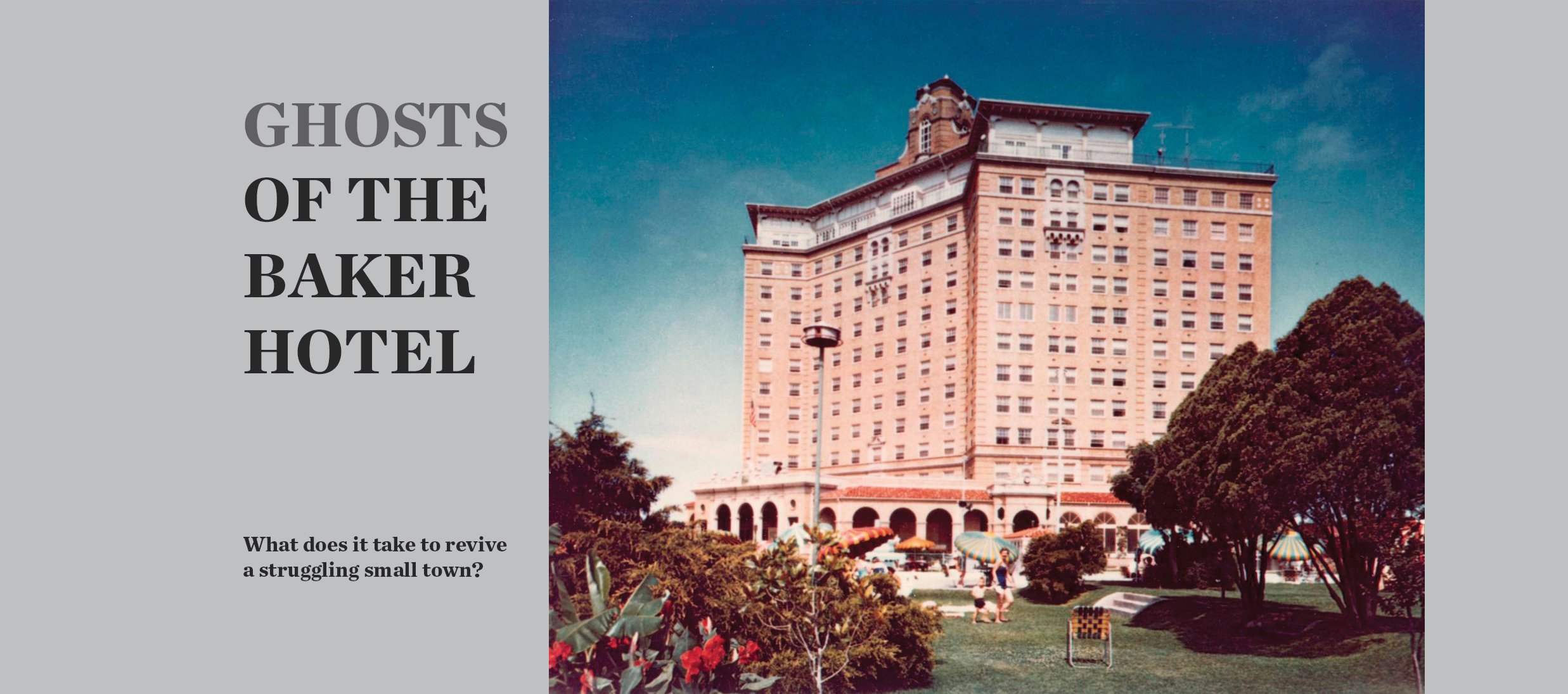
by Jason Heid
April 15, 2019
“Those of you that don’t believe, I’m glad you’re on this tour,” Angela Morgan tells a crowd of about 150 ghost-seekers one Saturday night a couple of weekends before Halloween. “Because as long as you’re taking photos, at the very least you’re going to leave here with orbs, apparitions, fogs, mists.”
Morgan’s voice carries through the cool night with the help of a headset microphone and an amplifier attached to a pocket of her fashionably torn jeans. She’s holding a palm-sized spotlight and wears a long, colorful coat over her black “I Survived! The Baker Hotel Ghost Walk” T-shirt.
A lifelong paranormal enthusiast, Morgan got the idea to start sharing tales of the supernatural in Mineral Wells, her hometown of 15,000 about an hour west of Fort Worth, nearly seven years ago. With permission from local leaders, she’s led tours of Mineral Wells’ historic downtown most weekends year-round. “They thought I was absolutely crazy. [But] the first ghost walk had 252 people,” she says.
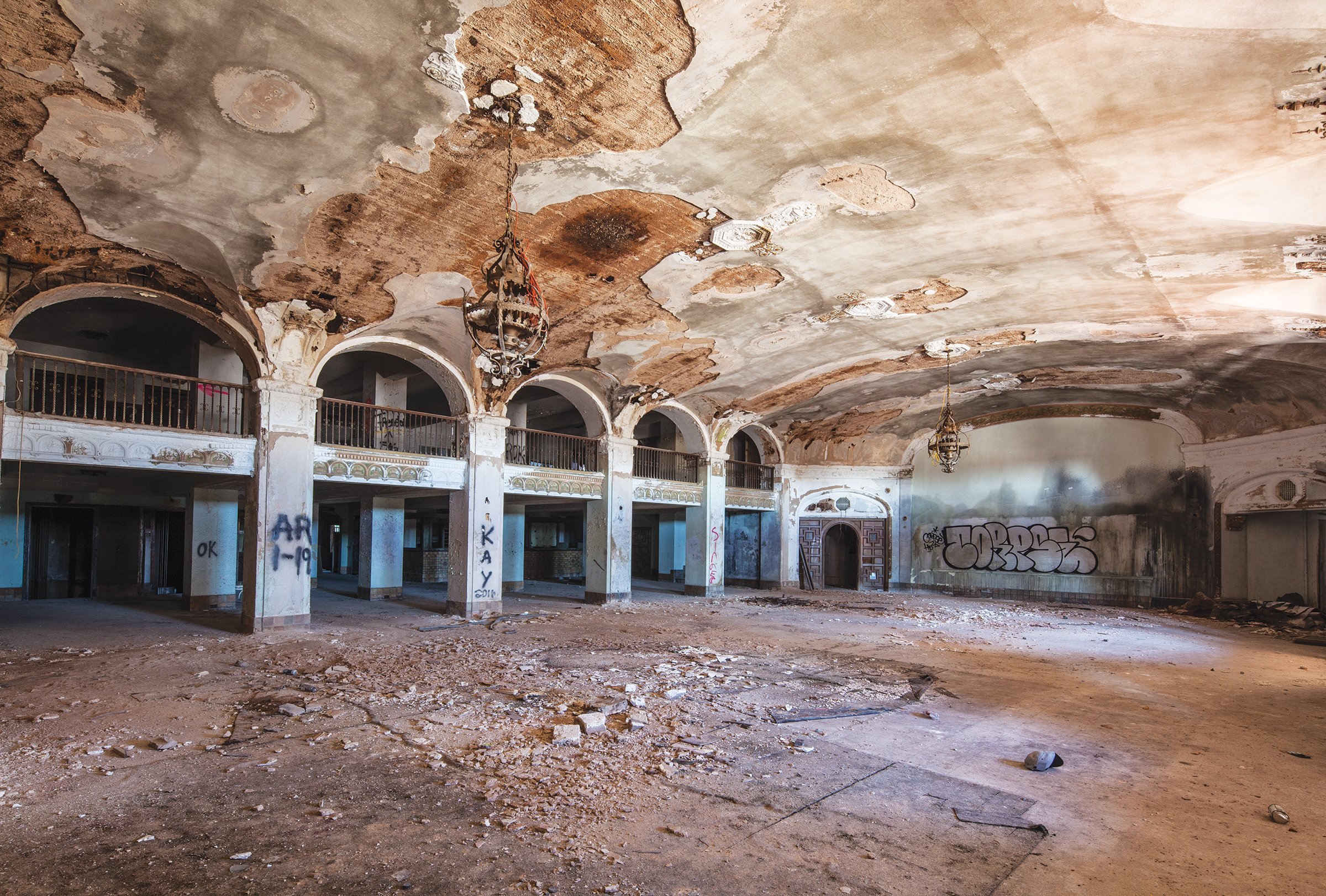
She speaks while standing a few steps up the stairs leading to the front entrance of the Baker Hotel, the tour’s — and the town’s — main attraction. The 14-story, 232,000-square-foot building is visible from miles away. Opened just a few weeks after the 1929 stock market crash that ushered in the Great Depression, the once-luxurious Baker is a relic of the town’s past as a resort destination. For decades in the late 19th and early 20th centuries, visitors flocked here for the purported benefits of the mineral-rich waters that gave the town its name. (Many Texas grocers still sell the town’s well water, bottled and branded as Crazy Water.)
But as advances in medicine made traveling to “take the waters” less popular, fewer people came. The hotel was shuttered in 1972, and the intervening 47 years haven’t been kind. Most of the hundreds of windows are broken, some by vandals, many by hailstorms. The exterior is weathered and dirty. In the Baker’s rundown state, it’s easy to understand why so many people come to hear — even believe in — the spooks that Morgan describes hanging around.
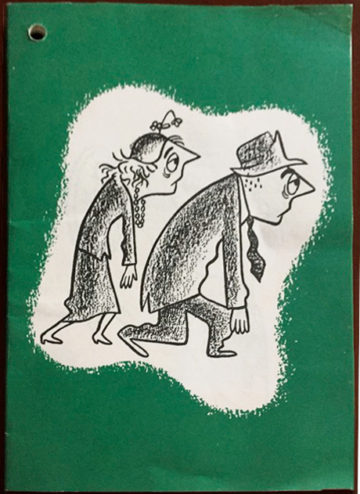
Unlike many struggling rural Texas towns, Mineral Wells has a tantalizing potential asset with a dominating physical presence. If only the Baker could be brought back, the thinking goes, it might spur a citywide renaissance. For the last 12 years, a pair of out-of-town developers have been working to make that dream a reality. Though their ambitious $60 million plan remains $25 million out of reach, widespread hope for its future persists.
From the top-floor Cloud Room, with its commanding view of the town and the hilly surrounding countryside, it’s not difficult to see what could be. Scrape the mud off the terrazzo floors. Scrub the muck off the wall tiles. Repaint the columns. It would take a lot of time and money, but how amazing it could look again — couldn’t it?
–
Until last summer, anyone driving through Mineral Wells who might have slowed to gawk at the hotel was left to guess at its origins. Now, however, a row of blue signs commissioned by the Chamber of Commerce runs along the exterior of the ground floor. Among the captions detailing the Baker’s history is a roster of celebrities who once visited: Lawrence Welk, Lyndon B. Johnson, Jack Dempsey, Marlene Dietrich, Clark Gable, Will Rogers, Roy Rogers and the Three Stooges, among others.
The shoeshine stand remains in the lobby, albeit a bit torn up. So does a row of wooden phone booths, the sort where harried reporters in old movies called in their scoops. Judy Garland stands next to the reception desk in a well-known photograph. According to local lore, famed bank robbers Bonnie and Clyde had the carpet removed from the hallway just outside their room so they could hear if law enforcement approached.
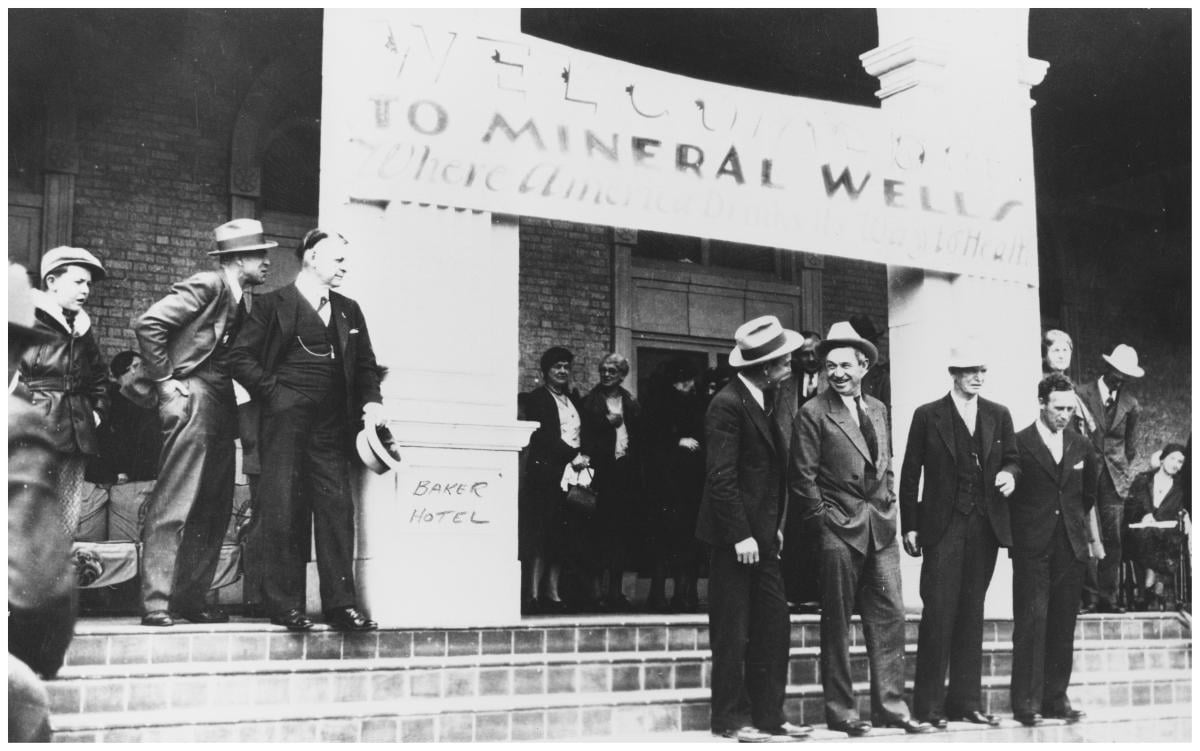
In those days, the town had a bustling tourism industry that had been steadily growing since 1877, the year James and Armanda Lynch settled the site that’s now Mineral Wells. The water drawn from the Lynches’ well had a funny smell and taste, so the family hesitated to drink it at first, fearing it might be poisoned. But when it seemed to cure Armanda’s rheumatism and the entire family began feeling healthier, word of the well’s curative properties spread. Soon, thousands of people were camping on the Lynch ranch to bathe and drink the water. The Texas and Pacific Railway came to town in 1891, making it even easier for visitors to enjoy the hotels, bathhouses, restaurants and shops popping up.
“Whether you are in search of health, recreation or a delightful place in which to live, you will want to come to Mineral Wells,” gushes a tourist guide likely from the 1940s. Its glossy photos show stylishly dressed visitors admiring the view from Inspiration Point, golfing on a well-tended fairway and taking in a jazz show. The town’s largest and grandest hotel was the place to see and be seen. “Baker Hotel guests are enchanted by a pool surrounded by flowers and a verdant garden,” reads a caption accompanying a scene that looks more like Hawaii than North Texas. In the solarium, guests could partake in trendy spa treatments: ultraviolet light therapy, colonic irrigation and, strangely, being “scientifically toasted” with steam while zipped to the chin inside a special cabinet. A system of pipes circulated ice water to the guest rooms, a welcome luxury in the Texas heat.
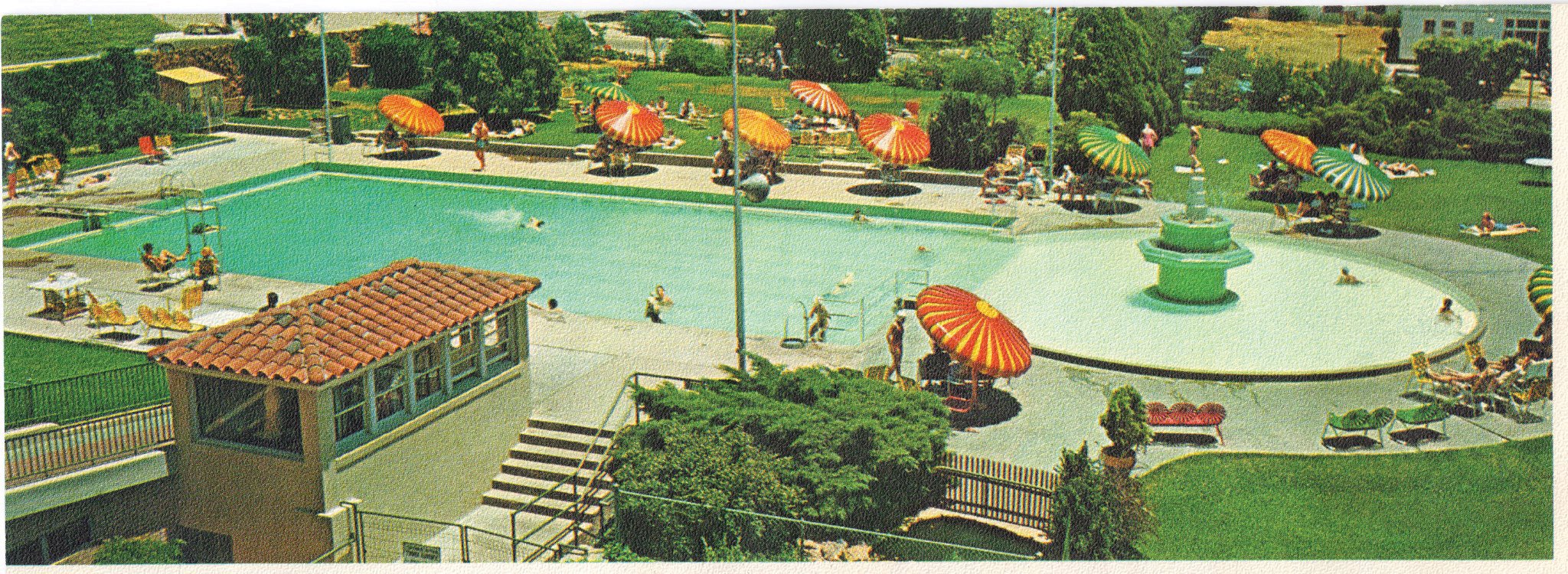
Mineral Wells was one of dozens of spa towns to pop up across Texas in the early 20th century, but its idyllic setting near the Palo Pinto Mountains made it especially popular, says Gene Fowler, author of Crazy Water: The Story of Mineral Wells and Other Texas Health Resorts. “It was a fun place to go to get away,” he says. “Riding donkeys out into the hills around [there] was real popular.”
Seeking healthy waters as a treatment for a wide variety of ailments was a trend that had made its way west from Europe and the East Coast. But by the 1940s, major medical discoveries such as penicillin made doctors far less likely to recommend a trip to health resorts. Most of the area’s 20-plus mineral water companies closed by the end of that decade, and the town’s economy shifted to greater reliance on the military. Fort Wolters was a key infantry training center during World War II, peaking with the presence of nearly 25,000 troops.
The Baker and the military kept drawing people to town for a little while, even as tourism faded. Both the Republican and Democratic parties hosted state conventions at the Baker during the 1950s, and in 1956 Fort Wolters became a helicopter flight training center. During the Vietnam War, tens of thousands of Army, Marine and Air Force helicopter pilots learned to fly there.
After Vietnam, Fort Wolters was deactivated. By then, the Baker and most other remnants of Mineral Wells’ resort fame had closed. No other major industry has stepped in since. One of the city’s largest employers, a privately run prison, closed in 2013. In 2017, Mineral Wells’ unemployment rate was just under 10 percent, more than twice the state average.
–
Laird Fairchild was once like so many visitors who drive through Mineral Wells, marveling at the Baker Hotel’s lost grandeur, on his way to a vacation property he leased with friends nearby. Surely someone had plans to redevelop it. In 2007, he got interested himself and contacted the Mesa, Arizona, family that’s owned the hotel since 1973. Twelve years later, Fairchild and his business partner, Chad Patton, are still working on the project.
They detail their plans for me in the glass-walled conference room of Fairchild’s company, Hunter Chase Capital Partners, in upscale Southlake, 75 miles east of Mineral Wells. Most of the Baker’s 450 guest rooms are small by today’s standards, so they’ll knock down walls to create just 157 larger rooms and suites. More space will be devoted to meeting rooms for corporate retreats, and the interior will be redone in a style they refer to as “Palo Pinto chic.” They show me a promotional video that features townspeople expressing their hopes that the Baker can reignite the local economy. Fairchild himself appears in the video, the hairs on his head noticeably darker and more numerous in the eight-year-old clip.
Fairchild and Patton describe the Baker as a labor of love. If they were just in it for the money, they say, they’d have given up long ago. “You look at the societal bottom line as well. What’s the impact on the society? And the third bottom line is the environment,” Fairchild says.
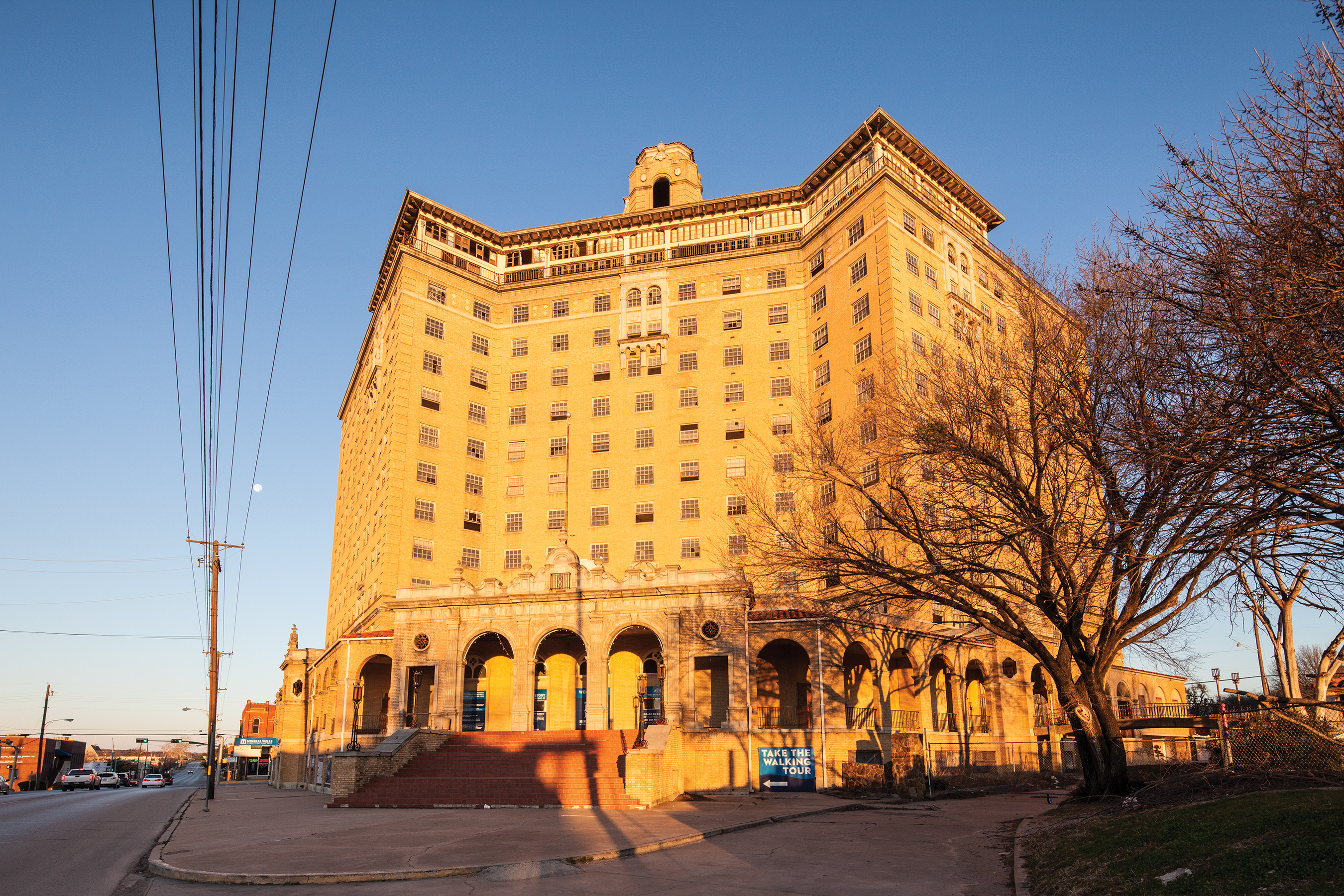
The Baker easily checks both the environmental and societal boxes, since renovating it would eliminate asbestos and other hazards as well as potentially revitalize the town. As for financial gain — well, that’s more complicated. The primary difficulty in saving the Baker — the reason it’s been left to rot for decades — is that the projected cost of the renovation ($60 million) significantly exceeds the expected value of the renovated property ($40 million). Traditional banks, which aren’t generally eager to finance hospitality projects even under the best of conditions, haven’t been interested. So Fairchild and Patton had to get creative.
The Baker qualifies for a variety of incentive capital, including tax credits available for historic buildings and low- to moderate-income census tracts. The city and county also approved tax-increment financing, and voters (with 96 percent approval) in 2014 agreed to devote sales-tax money to the project. Cobbling all that together, the developers are still about $25 million short. So they turned to the EB-5 visa program, which offers green cards to immigrants who invest at least $500,000 in the United States. Fairchild and Patton even traveled to China (where the vast majority of EB-5 applicants come from) for a 2016 conference with agents who represent potential investors.
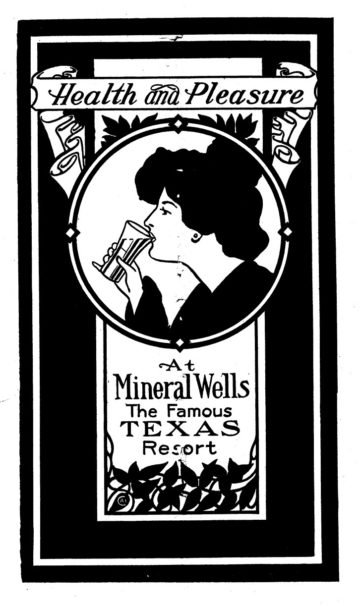
Certifying the Baker as an EB-5 investment took a couple of years and about $250,000. Wrangling among federal lawmakers leaves the future of the controversial program in doubt. Because of this uncertainty, the developers are no longer counting on foreign investment. They’ve returned to pitching banks.
It’s not an easy sell. Mineral Wells hasn’t been a tourist draw in decades. Its residents earn significantly lower incomes and are less educated than the state average. Its population has dropped by 11 percent since the 2010 census, a period of explosive growth for much of North Texas. And Mineral Wells’ latest economic development effort — a deal offering incentives to an ammunitions manufacturer promising 150 jobs — went south shortly before the Dallas Morning News revealed that the company had previously been sued for fraud.
“There’s plenty of folks in social media that think we’re crazy,” Patton says. “But I think if they really have spent as many hours and as much time and identified as many potential resources for capital that we have, they would feel the same way that we do, which is we can’t turn our backs on this.”
–
Just west of the Baker, much of the roughly five blocks of Oak Avenue comprising the heart of downtown Mineral Wells sits either unused or underused. A former department store is now a county government annex, its beautiful old wooden display cases housing artifacts for a small museum devoted to the town’s history. Several storefronts serve as storage spaces for the still-operating shops along a strip that suffered the same fate as many small-town Main Streets after the advent of big-box retailers.
As Phil Garrett shows me around, we seemingly can’t pass anyone without him pausing for a greeting and a handshake. For 26 years Garrett was the Palo Pinto County attorney, and he’s spent nearly his entire life in Mineral Wells. One of his grandfathers operated the pharmacy on the Baker’s ground floor. “If you’ve never lived in a community where you’re 50 years deep or 60 years deep, I don’t think I can translate it to the rest of the world,” he says. “I mean, you end up with a sense of community that’s hard to explain.”
Despite the rundown condition of many of the historic buildings, Garrett is optimistic about downtown’s future. He points out several new businesses that have opened in recent years. “We’re in the middle of a renaissance right now without the Baker,” he says. “We’ve seen a burst of energy in the town that we haven’t seen in decades.”
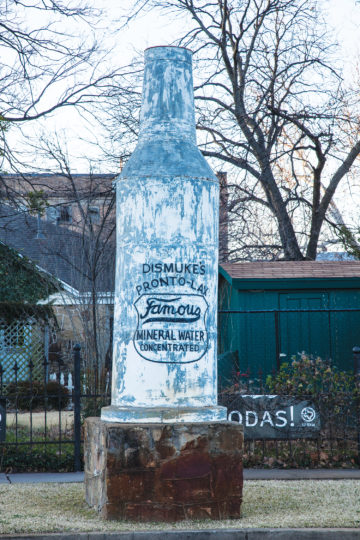
The model most often cited by people in Mineral Wells is Fredericksburg, the Hill Country town that has traded on its German heritage to bring visitors to shops, restaurants and bed-and-breakfasts. Mineral Wells similarly hopes to market its history. Outdoor enthusiasts who visit nearby Possum Kingdom Lake and Mineral Wells State Park might enjoy a night or two at the Baker or a visit to its rejuvenated spa, the thinking goes.
In 2014, the city government partnered with the University of Texas at Arlington to develop a plan for revitalizing downtown. They found that locals viewed a reborn Baker as a potential strength and a failed Baker as a potential threat to these efforts. Lead UTA researcher Ahoura Zandiatashbar believes that Mineral Wells’ proximity to Dallas-Fort Worth, the fourth-largest metropolitan area in the United States, could help the Baker to succeed as a “staycation” destination. Yet when it comes to the chicken-and-egg question of whether the Baker could be the catalyst necessary to spark a community transformation or vice versa, Zandiatashbar doesn’t recommend betting on a hotel-first approach. “If downtown becomes revitalized … generally that’s the time that the investors would be interested,” he said. “Putting all of the weight on the Baker Hotel might not be the best strategy.”
The UTA planners also proposed creating a public green space along several mostly empty blocks to the west of North Oak Avenue. In November, the Mineral Wells City Council hired an architectural firm to create a 3D conceptual design for the park and other enhancements to beautify and connect downtown to the rest of the city.
It’s this park that developer Randy Nix is most excited about when I meet him to discuss several projects he has underway. Nix has lived in Mineral Wells most of his life and operates a realty business downtown. Since summer 2017, his company has purchased at least 11 properties along Oak Avenue.
A former theater, built in 1900, is now an arts and cultural space. Nix had a striking mural — a 1920s flapper blowing on a dandelion against a blue background — painted on its façade. There’s a former bathhouse, also dating from about 1900, that he hopes eventually to turn back into a spa. Most impressive so far is The Market at 76067, which opened in October under the management of Nix’s wife, Misty. It’s a sprawling, two-story space where about 50 local vendors sell gourmet foods, clothes, antiques and home decor. A coffee/cocktail lounge and a flower shop are attached. Nix and 10 other local investors are also working to renovate the town’s second-most historic hotel, the Crazy Water, transforming its seven stories into event spaces, restaurants and eventually apartments.
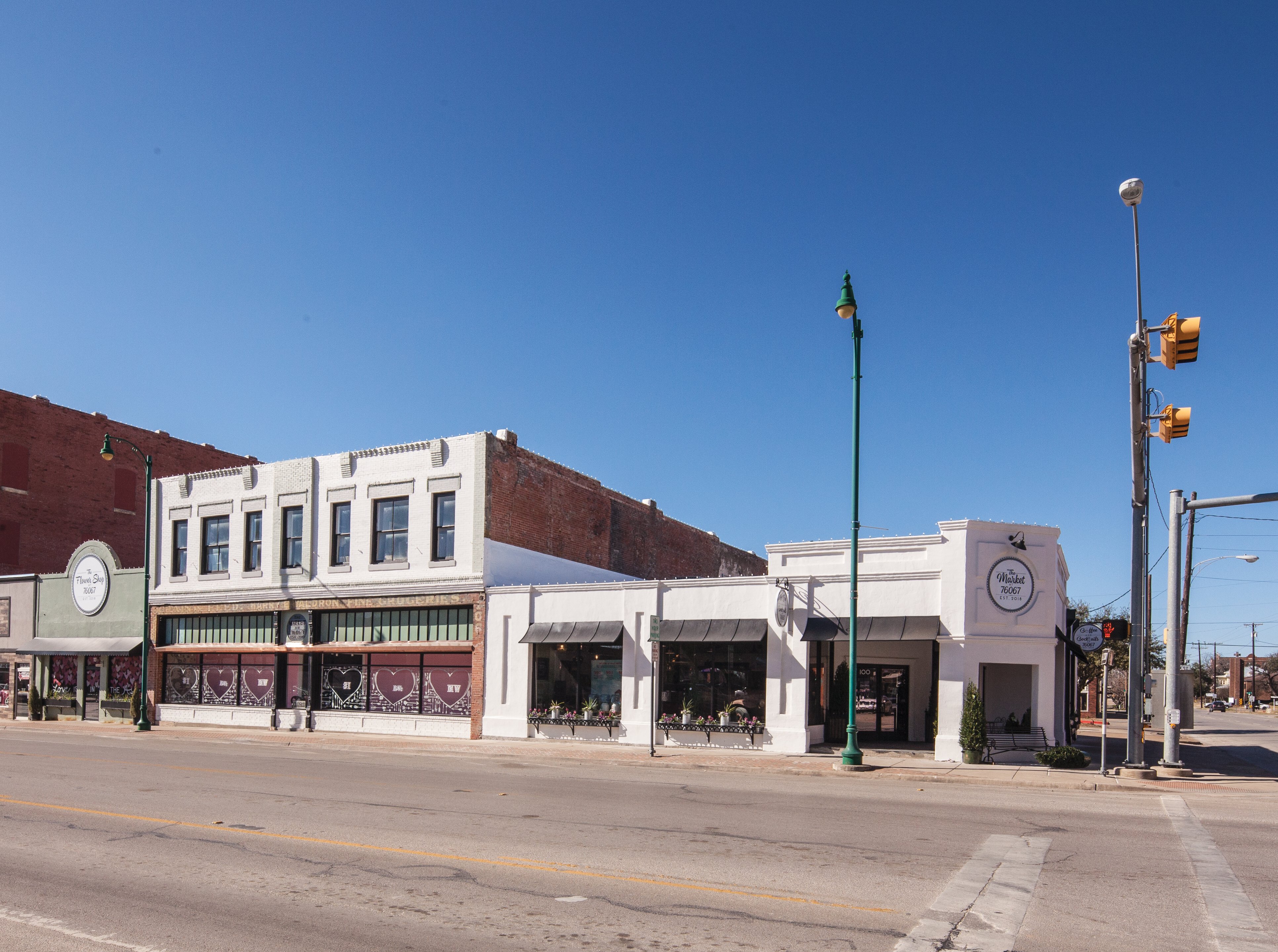
“A lot of people are tired of waiting on the Baker to bring back the tourism industry,” Nix says. “The only way the Baker is going to be successful is if you have an active tourism industry in downtown. So you’re going to have to flesh out downtown before you have the Baker.” It’s the same story I heard over and over from nearly everyone I encountered in Mineral Wells. For far too many years, locals would dolefully look up at the decaying treasure in their midst. No longer. Mineral Wells isn’t pegging all its hopes on a single project anymore.
When Angela Morgan’s ghost tour wraps up, Oak Avenue is mostly dark and empty. One lively courtyard restaurant behind the Brazos Market & Bistro opens for dinner and live music on weekends when the weather is nice, but even it closes by 10 p.m. A Fuzzy’s Taco Shop franchise used to stay open late, but ran afoul of some downtown residents complaining about noise before it closed in 2017.
Without bars, restaurants or ice cream shops to patronize, the ghost-seekers can’t do much but walk back to their cars and take one last look at the Baker Hotel as they drive off. Morgan is right that everyone can leave with a photo of at least one ghost — the Baker itself.
